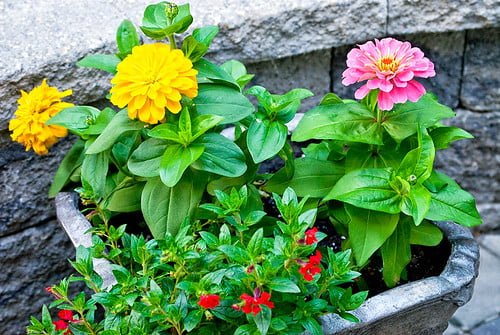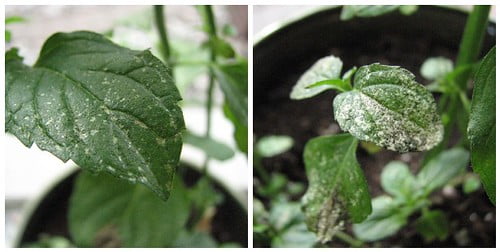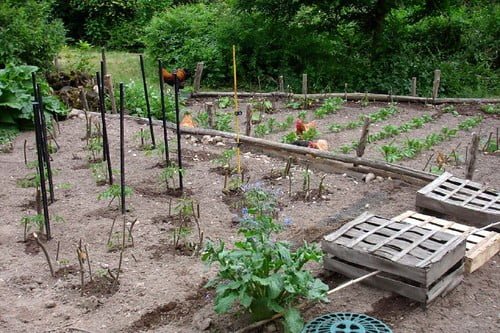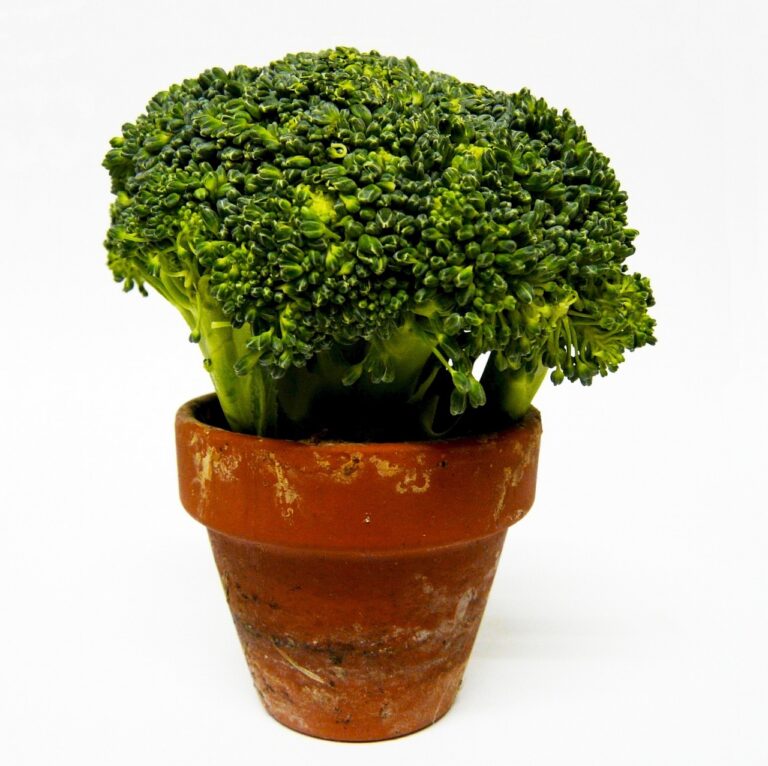Step-by-Step Guide to Effectively Eliminate Whiteflies
To eliminate whiteflies, start by understanding their life cycle. Look under leaves for tiny, gray-white insects. Set up yellow sticky traps to catch them. Introduce ladybugs and green lacewings as natural predators. Use insecticidal soap or oils to suffocate them. Maintain healthy plant conditions to prevent infestations. Only use chemical treatments as a last resort, following guidelines. Remember, there are more steps to effectively tackle whiteflies.
Understanding Whitefly Infestations
Whitefly infestations can quickly devastate plants, with clusters of small, moth-like insects congregating on the undersides of leaves. These pests, often referred to as the greenhouse whitefly, pose a significant threat to various host plants by feeding on plant sap. The damage caused by whiteflies includes wilting, yellowing, and stunted growth in infested plants. One of the most concerning aspects of whitefly infestations is their rapid reproduction rate. Adult female whiteflies can lay hundreds of eggs on plants, leading to a swift increase in the whitefly population if left unchecked.
When dealing with whitefly infestations, it is crucial to understand the life cycle of these pests. Whitefly larvae, which hatch from the eggs laid by adult females, also feed on plant sap. This continuous feeding weakens the host plants and provides an environment for the whitefly population to thrive. Outdoor plants originating from infested greenhouses can introduce whiteflies to outdoor gardens, making it vital to monitor and control whiteflies effectively to prevent widespread damage.
To effectively combat whitefly infestations, it is important to target the undersides of leaves where these pests typically congregate. Understanding the behavior and habits of the specific whitefly species affecting your plants can aid in implementing appropriate control measures.
Identifying Whitefly Presence
When identifying whitefly presence, look for tiny, gray-white insects with powdery wings on the underside of leaves. Check for eggs in circular patterns and watch for swarms of small insects when disturbed. Observing sticky honeydew, black sooty mold, or ants on plants may also indicate a whitefly infestation.
Signs of Whiteflies
Examining the undersides of leaves is essential for identifying the presence of whiteflies in your garden. Look for tiny, moth-like insects with powdery white wings fluttering around when disturbed. Check for sticky honeydew or black sooty mold on plant surfaces; these are telltale signs of whitefly infestation. Keep an eye out for yellowing, wilting, or stunted growth in affected plants, indicating the damage caused by these pests. If you notice swarms of tiny bugs flying off plants as you approach, it’s likely whiteflies. Additionally, inspect the undersides of leaves for circular egg clusters, a sure sign that whiteflies have made themselves at home in your garden.
Damage Caused by Whiteflies
Underneath the leaves of your plants, you may observe small clusters of winged insects indicating the presence of whiteflies. These pests can cause significant damage, leaving behind sticky honeydew and sooty mold on plant surfaces. Look out for yellowing, wilting, and stunted growth as common signs of whitefly infestations. When disturbed, whiteflies often swarm away from the plants. Inspect the underside of leaves for oval nymphs resembling scales and circular patterns of eggs to confirm the presence of whiteflies. By identifying these symptoms early on, you can take proactive steps to control the infestation before it causes extensive harm to your plants.
Whitefly Control Methods
Upon inspecting your plants, one effective way to identify the presence of whiteflies is to look for tiny, gray-white insects clustered on the undersides of leaves. These clusters may also contain eggs laid in circular patterns. Adult whiteflies with powdery white wings can be observed flying off plants during the day. To monitor and capture adult whiteflies, yellow sticky traps are a useful tool. In addition, consider using a water spray to physically remove whiteflies from plants or opt for insecticidal soap to control infestations. Keep an eye out for the sticky substance called honeydew left behind by whiteflies, as it can attract ants and promote the growth of sooty mold.
Implementing Natural Whitefly Control Methods
To effectively combat whitefly infestations in your garden, consider introducing natural predators such as ladybugs and green lacewings. These beneficial insects feed on whiteflies, helping to naturally control their populations. Ladybugs, also known as lady beetles, are voracious predators of many garden pests, including whiteflies. Green lacewings, with their delicate appearance, are fierce predators in their larval stage, feeding on whitefly eggs and nymphs.
In addition to natural predators, you can use insecticidal soap or horticultural oils to suffocate and control whiteflies. These products are effective at targeting whiteflies while being less harmful to beneficial insects. Reflective mulch or aluminum foil placed around plants can deter whiteflies by confusing them with light reflection, making it harder for them to settle.
Companion planting with herbs like basil or mint can also help repel whiteflies naturally. These aromatic plants emit scents that deter whiteflies, reducing the likelihood of infestations. By incorporating these natural control methods into your gardening practices, you can effectively manage whitefly populations while maintaining a healthy garden ecosystem.
Deploying Yellow Sticky Traps
How can yellow sticky traps effectively capture adult whiteflies in your garden? Yellow sticky traps are a valuable tool in combating whiteflies due to their bright color and sticky surface, which attract and trap these pests effectively. When strategically placed near affected plants, the traps can greatly reduce the whitefly population. Regular monitoring and timely replacement of traps are essential to maintain their efficacy in controlling adult whiteflies.
Yellow sticky traps offer a non-toxic and environmentally friendly method of managing whiteflies. They are safe to use around children, pets, and beneficial insects, making them an ideal choice for gardeners seeking natural pest control solutions. By deploying these traps, you can target adult whiteflies specifically, breaking the reproductive cycle and preventing further infestations on your plants.
To maximize the effectiveness of yellow sticky traps, make sure you place an adequate number of traps based on the size of your garden and the severity of the infestation. Check the traps regularly to assess whitefly populations and replace them when they become covered with insects or debris. By incorporating yellow sticky traps into your integrated pest management strategy, you can significantly decrease adult whitefly numbers and protect your plants from damage.
Introducing Predators for Whitefly Management
Ladybugs and green lacewings are two effective natural predators that can be introduced to manage whitefly populations in your garden. Ladybugs are important eaters of whitefly eggs, larvae, and adults, helping to keep their numbers in check. Green lacewings also play a vital role by consuming whiteflies at different life stages, contributing to effective whitefly management.
In addition to ladybugs and green lacewings, encouraging parasitic wasps can aid in controlling whitefly populations. These beneficial insects parasitize whitefly eggs, offering a natural and sustainable method to reduce infestations. Predatory insects like predatory mites are another valuable asset in the fight against whiteflies. These tiny mites feed on whiteflies, helping to lower their numbers in your garden.
Introducing natural predators for whitefly management provides a long-term solution to the issue of whitefly infestations. By establishing a diverse community of beneficial insects in your garden, you can create a balanced ecosystem where natural enemies of whiteflies thrive. This approach not only helps to control whitefly populations but also promotes overall garden health without the need for chemical interventions. Embracing the power of natural predators is a proactive and eco-friendly way to tackle whitefly problems effectively.
Using Chemical Control Options Sparingly
When dealing with severe whitefly infestations, it is advisable to contemplate utilizing neonicotinoids or pyrethroids as chemical control options sparingly and strategically. These chemicals can be effective but should be used with caution due to their potential impact on beneficial insects and the environment. Here are some key points to ponder when using chemical control options:
- Follow Manufacturer Guidelines: Always carefully adhere to the instructions provided by the manufacturer when applying chemical treatments. This will help minimize risks to beneficial insects while maximizing the effectiveness of the treatment.
- Consider Systemic Insecticides: Systemic insecticides can be a valuable tool in the fight against whiteflies as they target these pests through plant uptake. This method provides long-term control and reduces the need for frequent reapplication.
- Rotate Treatments: To prevent whiteflies from developing resistance to specific pesticides, it is imperative to alternate between different chemical treatments. This practice helps maintain the effectiveness of the control methods over time.
Maintaining Plant Health for Prevention
Maintaining plant health is vital for preventing whitefly infestations. I prioritize soil quality to guarantee my plants receive essential nutrients and have strong immune systems. Proper watering techniques are pivotal in reducing plant stress and making them less susceptible to whiteflies.
Soil Quality Importance
To foster strong plant health and prevent whitefly infestations, ensuring excellent soil quality is vital. Here are three essential factors highlighting the significance of soil quality in maintaining plant health for prevention:
- Nutrient-Rich Soil: Providing plants with essential nutrients boosts their resilience against whiteflies and other pests.
- Balanced pH and Drainage: Maintaining a harmonious pH level and good drainage guarantees strong root systems, aiding plants in resisting whitefly damage.
- Organic Amendments: Introducing compost or organic matter into the soil improves its structure, promotes beneficial microorganisms, and enhances plant immunity to whitefly infestations.
Proper Watering Techniques
Watering plants accurately is essential for preventing whitefly infestations and maintaining strong plant health. To avoid creating a humid environment that attracts whiteflies, water plants at the base using a soaker hose or drip irrigation system instead of overhead watering. It’s best to water plants in the morning, allowing foliage to dry throughout the day and reducing the moisture levels that whiteflies thrive in. Overwatering should be avoided as it can lead to root rot and weaken plants, making them more susceptible to whitefly damage. Consistent watering schedules tailored to the plants’ needs play an important role in maintaining plant health and building resilience against whitefly infestations. Remember, dry foliage is key to deterring these pests.






